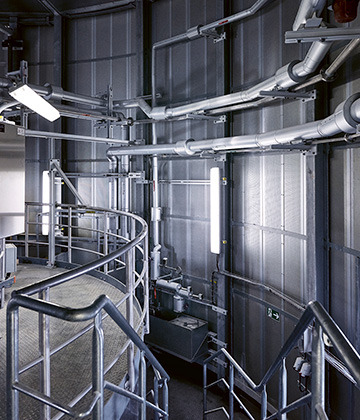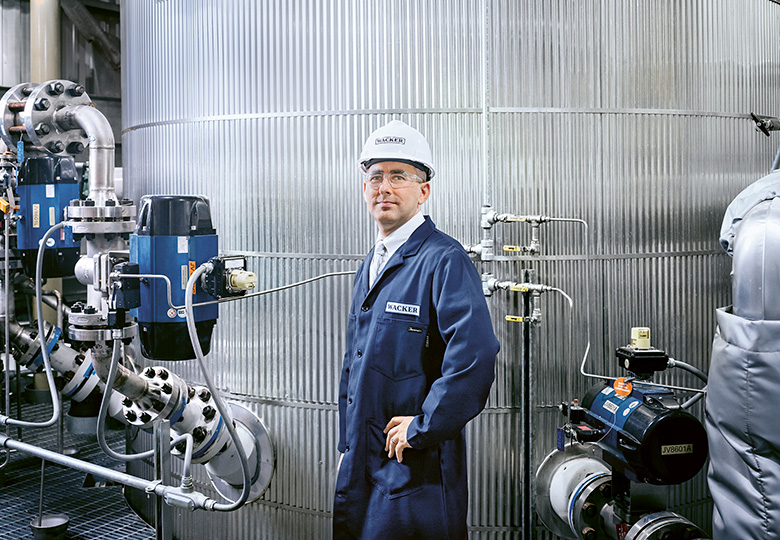At Every Site – World-Class Production
Jeremy Reed knows every angle, every valve and every pipe at WACKER’s production site in Calvert City, a small town in the US state of Kentucky. In 2015, he was responsible for building the new dispersion reactor with 85,000 metric tons’ annual capacity, which everyone here just calls “CC6.” The Calvert City plant is the biggest vinyl acetate-ethylene copolymer (VAE) dispersion plant in America. Every year, several hundred thousand tons of VINNAPAS® dispersions are manufactured here. Now, Reed is part of an international team of production engineers who want to bring WACKER POLYMERS plants up to world class.
A 360-Degree Comparison of all Plants
The plants at Burghausen and Cologne (Germany), Nanjing (China), Ulsan (South Korea) and Calvert City already operate extremely efficiently. To make them even better, the WACKER POLYMERS division initiated a project in 2017 that is pulling every lever to increase productivity and production safety. If the ambitious goal of doubling sales in the next ten years is to be achieved, production will play a prominent role.
“We learn a tremendous amount from one another and we spur each other on to obtain the best results.”
Jeremy Reed, head of production technology at Calvert City


World-class production: the new dispersion reactor in Burghausen
The program started with a comprehensive systematic analysis of each individual plant. Ten criteria were analyzed, including safety and efficiency of the production systems, raw-material supply, infrastructure conditions, logistics inside and outside the plant, and sustainability in production. The business division completed this 360-degree comparison in early 2018. In the next step, every site will be measured against each criterion to determine where it already meets the high standards, and where it still has room for improvement. Finally, the potential for transferring the model processes (best practice) to other sites will be examined. The key point is to take into account the different complexities in the plants, since not all the sites will manufacture the same products. Where the respective site managers and production managers do not have the resources themselves to implement the measures satisfactorily, they receive support from their counterparts at other sites.
“There’s no point in everyone reinventing the wheel all the time.”
Jeremy Reed
Jeremy Reed considers sharing experience with the production engineers at the other sites an absolutely essential resource. “We learn a tremendous amount from one another and we spur each other on to obtain the best results,” he says. His colleagues’ networked knowledge is available digitally, and is pooled by all the sites. “There’s no point in everyone reinventing the wheel all the time,” says Reed. The program also serves to keep a lead over other companies in the industry. Top quality and world-class sites are the best immunization against competition.

Jeremy Reed, head of production technology at Calvert City